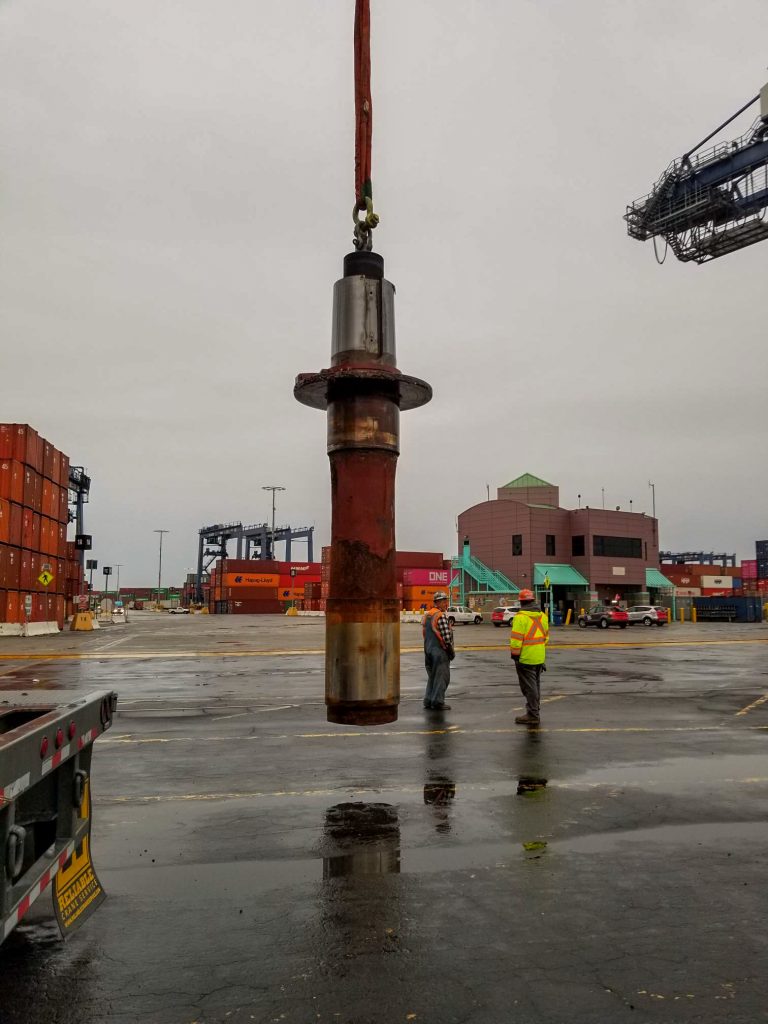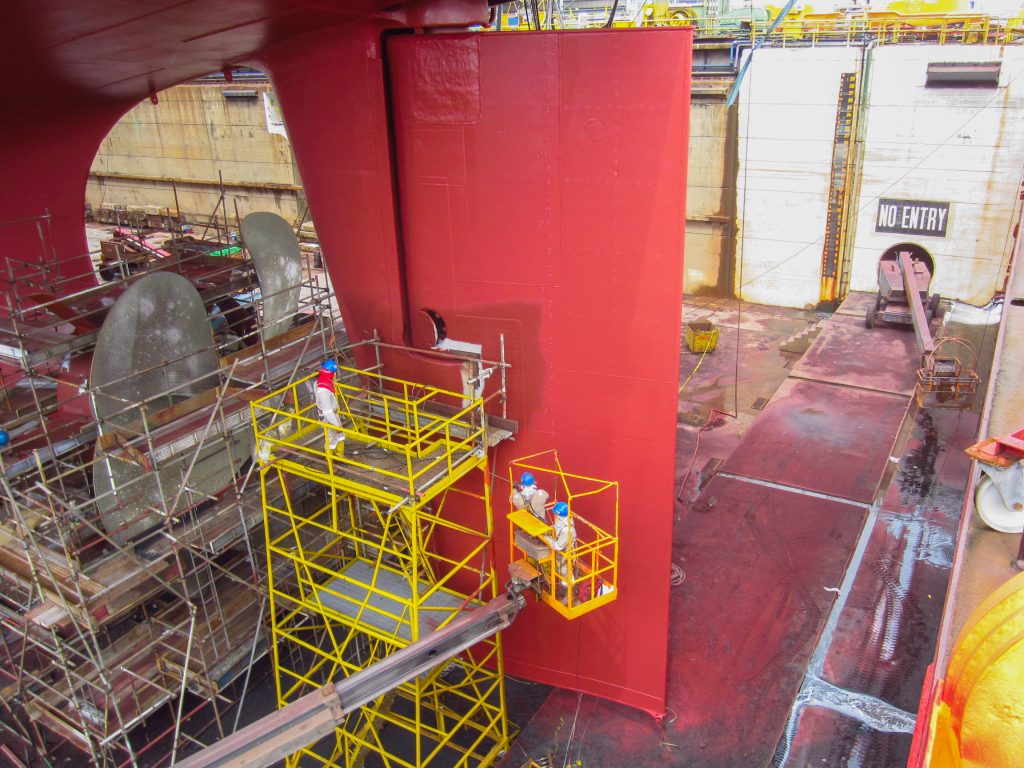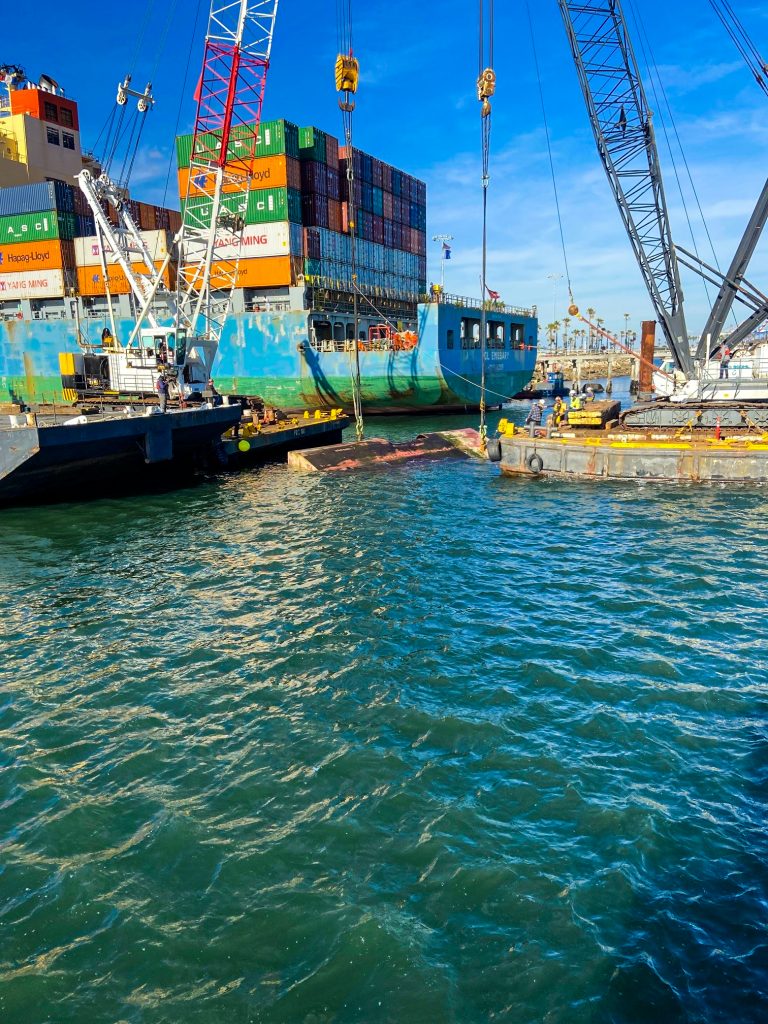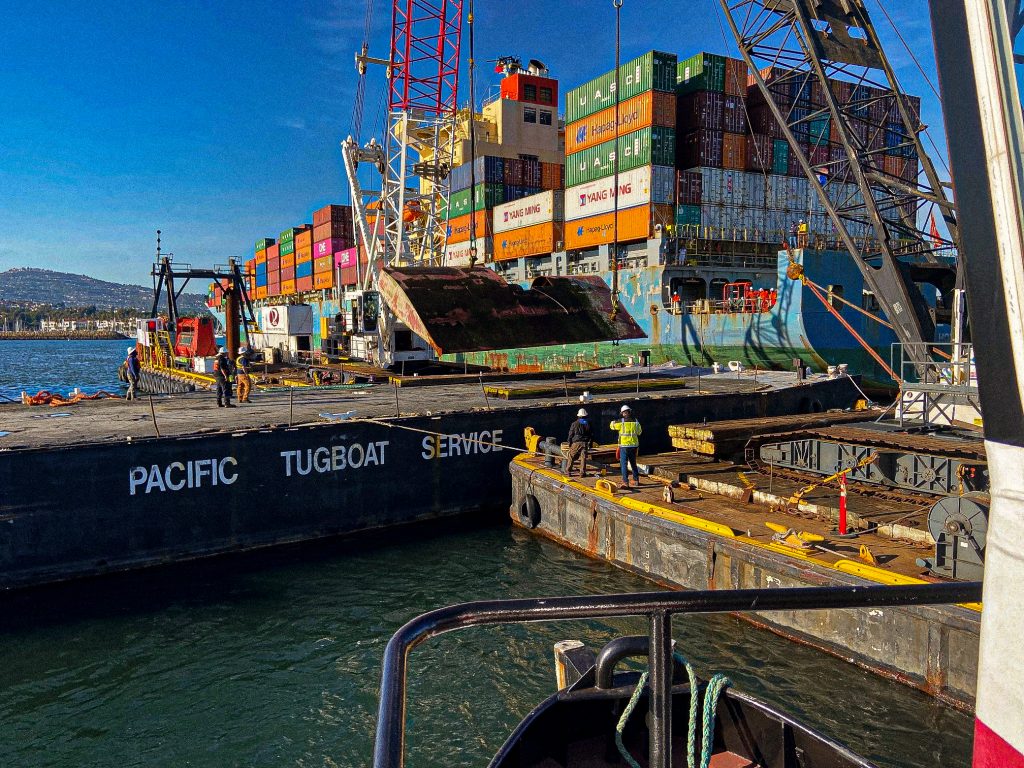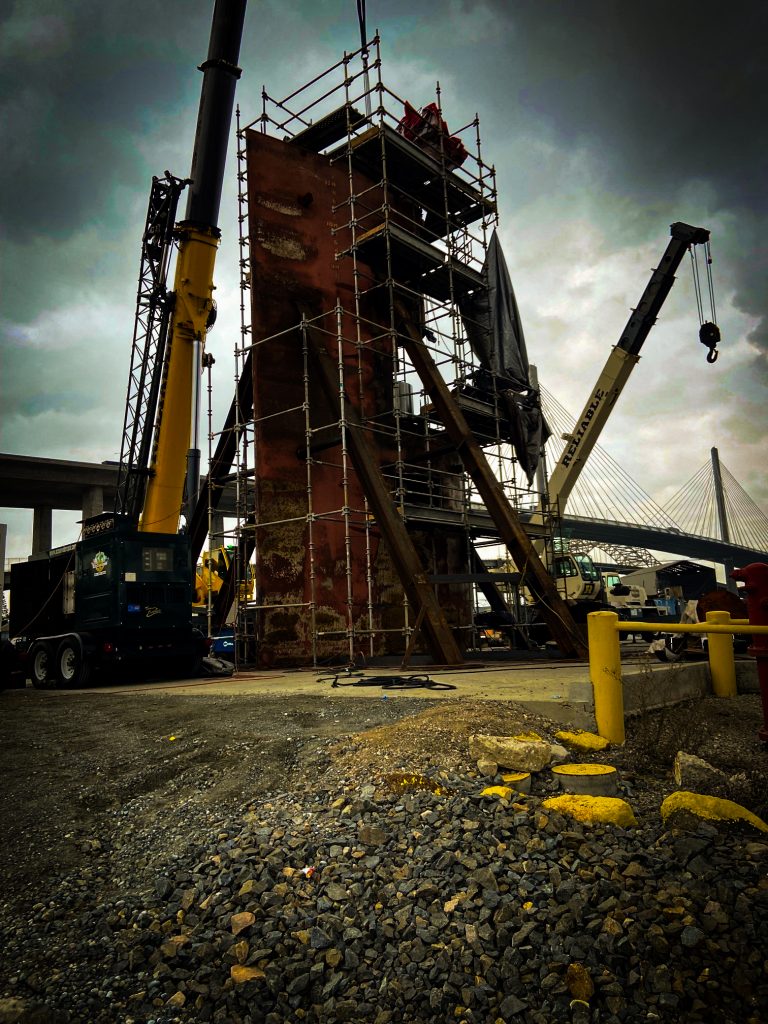Are you ticklish? I don’t mean the tendency to squeal, wriggle and scream when someone touches the bottom of your feet. I mean the hunched up feeling when some job you are doing has little or no room for error. When being just a little off means a lot went wrong. Expensive wrong. At Pacific Maritime Group we are involved in a very ticklish job in Long Beach.
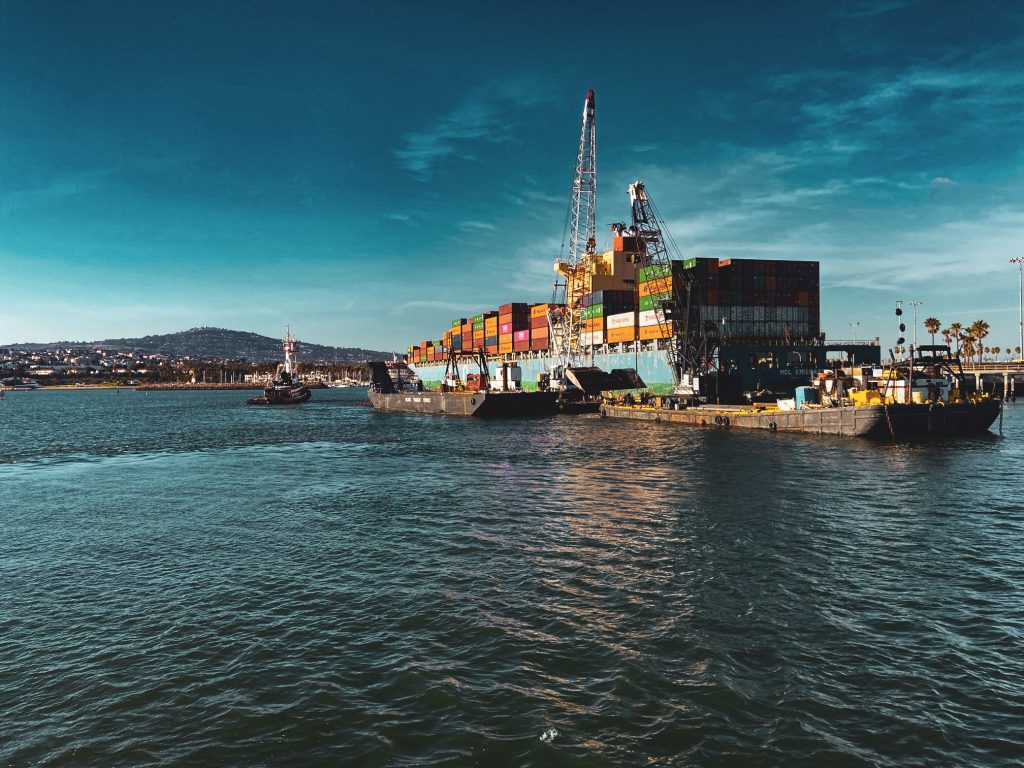
This photo is of the actual snapped shaft. The forklift and workers offer some notion of scale. A replacement shaft will be machined to specifications and clad with an alloy sleeve. The shaft itself weighs several tons.
The ship’s rudder is an upright blade, made to direct water flow. It has a streamlined, smooth shape but bottom heavy and not made for easy hoisting. Oceanwide contracted Subsea Global Services to first inspect the rudder and then find a way to attach lifting points. These are steel rods inserted horizontally through the vertical blade.
Here is a rudder attached to the ship while in drydock. It is an enormous, critical part of the ship.
Oceanwide contracted Subsea Global Services to first inspect the rudder and then find a way underwater to remove the rudder from under the ship. The ship was loaded and the rudder fully submerged, which added to the difficulty. As the rudder shaft had broken, the rudder itself was in a precarious position. It had to be rigged in a way that lent careful control in its lift so it would not accidentally strike the ship itself. Subsea Global and Oceanwide formulated a plan for this lift.
Then it was our turn. As a subcontractor, Pacific Maritime Group joined in what is a complicated and, at times, ticklish job. First, it involves lifting a rudder that weighs upward of 130 tons. Oh, from underwater. Picking a ship’s rudder that is not visible from the surface and then swinging it ever so gently away from the ship before bringing it up.
How difficult is this pick? Big enough and tricky enough to require two floating cranes. We delivered the two crane barges—PTS 180 and DB San Diego.
Carefully, slowly and safely, the DB San Diego lifted the rudder and swung it away from the ship. The PDC 180 was added and together they lifted the rudder, brought it to horizontal and set it flat upon the barge PTS-150-R.
Whew! The rudder, safely lashed and stable, was taken to Long Beach, where it was craned ashore. There it was raised and propped up for repair.
Oceanwide techs will do what it takes to make the rudder usable again. Welding, machine work, lathe work are all in the plan. A ship is waiting. Customer watching. The next real question is whether the rudder, when repaired, will fit back in? What could go wrong? Only a thousand things. Stay tuned as we wait to see.

